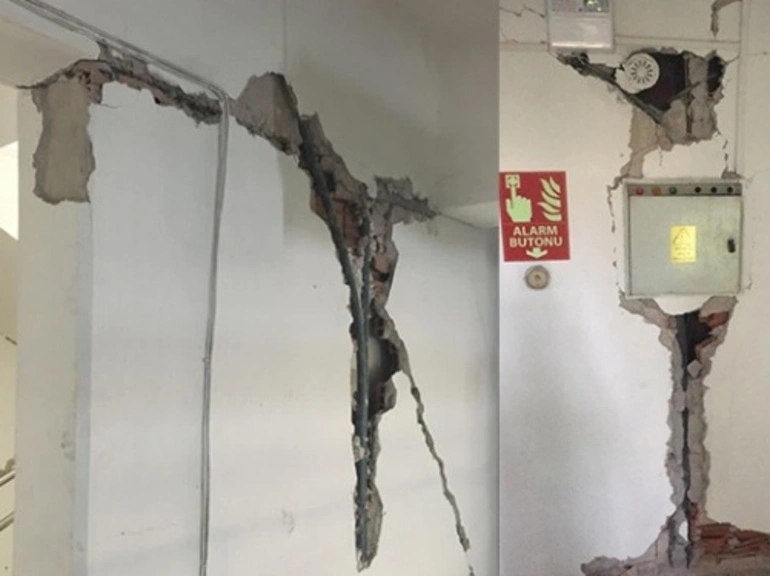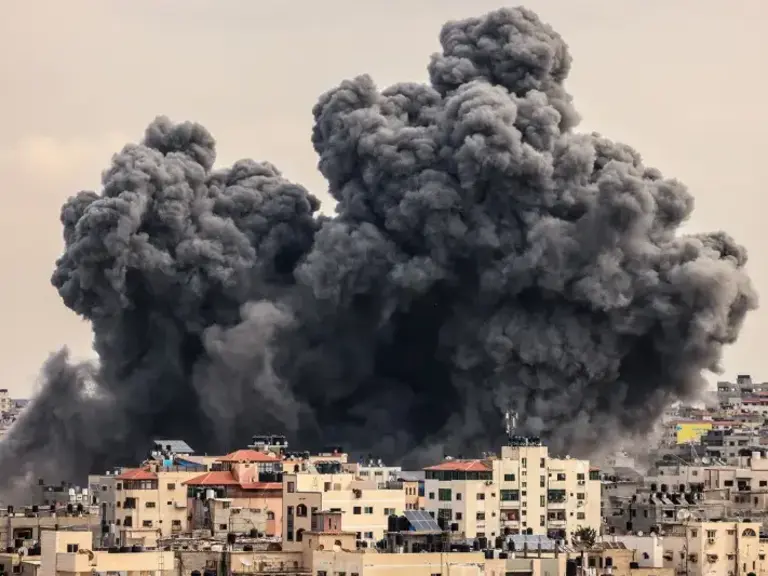Earthquake Agenda: Buildings, Different Grounds and Officials
31 October 2023 – Edin Zaim

After the 1999 Gölcük Earthquake, Ahmet Mete Işıkara was the only calm and reliable interlocutor whose words we could trust in the public and who explained what had happened to us. He was the star of the earthquake agenda, and he had even predicted and warned about the Düzce Earthquake.
Over time, the public’s expectations from Işıkara increased and the media expected him to make a prediction about who would survive the earthquake, with questions about which buildings and which grounds were strong. Today, when I think about the course of public debates and their interlocutors, I realize how virtuous it was for Işıkara to ask for retirement from earthquake stardom by saying “Earthquakes do not kill, buildings do!” at one point.
In this article, I will address how we can filter the information in the media by focusing on buildings, the concrete subject of earthquake risk, and the actors and processes that are the hidden subjects of earthquake risk, which I believe are missed in the popular earthquake agenda, as well as what an ideal earthquake agenda should be.
Building Robustness
While building stability is the domain of engineers, the multi-layered and multi-actor nature of a construction process can compromise the safety of a building at different stages.
Project: The first phase including ground surveys, earthquake scenarios, competence, and care of engineering services.
Construction: The construction phase, including building supervision, the competence of construction supervisors and masons, and the skill and care in execution.
Use: The final stage, which involves the building’s users and the possible effects of environmental impacts on the building.
Let’s face it, in Turkey, it is rarely possible to trust all of the practices at these stages. Therefore, we should be aware that comments pointing to only one of these elements are inadequate to define the real risk and unwarranted to raise concerns.
I believe that one of the reasons why the earthquake agenda continues to focus on geology is the uncertainties related to the above-mentioned stages. This is because the Turkish public has little faith in the proper execution of the above steps, and the uncertainty that arises as a result of this distrust is greater than when and how strong an earthquake will occur. We are probably consoling ourselves in a pool of despair.
Earthquake Engineering
The response of a building to earthquakes is an area of civil engineering, or even earthquake engineering as a more specific specialization. In the professional literature, a building that we can trust in terms of earthquake response is considered to be an “engineered” building. We assume that an “engineered” building is designed and constructed in accordance with its intended use and that the loss of life in a possible earthquake is minimized.
The static project and construction, which is the engineer’s area of responsibility, does not only involve an engineering calculation; there is also the supervision of the construction process and the design of the structural system, and we expect the structural system to be shaped by the architecture and use of the building. This element is unlikely to be understood by an outside non-professional. Therefore, engineers often find it difficult to explain that many buildings that are reported in the media to have been severely damaged in the earthquake are intact, while buildings that are assumed to be intact are damaged.
However, in Turkey, where approximately 150,000,000 m² of buildings are constructed annually, and when we consider that the projects are mostly small-scale, it is reasonable to doubt both the quantitative and qualitative capacity to meet this service.
Rocky Ground
Buildings kill, not earthquakes. However, we can rely on rocky ground to reassure us and distract the current discussions away from the real danger. What we need to know in this regard is that if we do not have confidence in the project, construction, and utilization processes of the building, we are right to hesitate even though our building is constructed on solid ground.
In fact, we often observe that some structures collapse while others do not on the same ground. Beyond their personal curiosity and experience, geologists’ opinions on the engineering dimension of the building are valid within this framework. In general, geology is specialized in the ground and its possible behavior during an earthquake, while civil engineering is specialized in how the building should be constructed in accordance with the given ground and earthquake scenario. The competence and cooperation of these two fields are vital for the construction of a safe building.
Stealing from Material
This phenomenon is considered to be minimized, especially with building inspection, ready-mixed concrete, and earthquake awareness. In addition, the cost of rough construction is at a rate that is not worth taking this risk in the market value of the real estate. However, neither the municipality, nor engineers, nor inspection firms know the best how a building is constructed. Only the people who construct the related building know this best.
Construction professionals with field experience speak of the potential for many constructions to have defects that are both difficult to detect and difficult to prevent, from fastening stirrups to pouring concrete. This is speculative, but in a sector where more than 700,000 apartments are built each year by small contractors on a parcel-by-parcel basis, rather than in large projects, it is reasonable to be suspicious of the average quality.
Buildings After Earthquake
Since 1939, earthquake regulations in Turkey have been continuously updated with the consultancy of earthquake engineers in order to adapt current construction technologies and minimize handicaps in applications. Therefore, the newest building is considered to reflect the most up-to-date measures and to be safer.
The main reason why pre-earthquake buildings are considered risky is that they are not subject to construction supervision and may have been constructed without engineering services, rather than abide by the current earthquake regulations. Since 2001, all constructions have been subject to building inspection regulations. Let’s keep in mind that there has been a lot of speculation about construction inspections and that updates have been made regarding the implementation of this regulation. However, it is clear that a stronger building will not be achieved by more inspections, but by a construction sector that does not need to be inspected.
Column Cutting
In the chaos I have described above, the structural damages to buildings during the use phase are more frequent and more severe than you can imagine. Due to column cutting, thinning, damage to slabs, loss of load-bearing walls, neglect, moisture, corrosion, etc., the load-bearing system of many buildings has been reduced to a level that will not be effective in the event of an earthquake. The level of insensitivity on this issue points to the low level of consciousness regarding earthquake safety even in the smallest social units and the prevalence of our common despair.
Earthquake Scenarios
If you take a look at the “Kahramanmaraş Provincial Disaster Mitigation Plan” prepared for Kahramanmaraş in 2020, you will see that where, why, and how damage will occur in an earthquake in the city and the measures to be taken are reported in advance. Although there are different scenarios for Istanbul regarding the structure of the fault in the Marmara Sea and the quantity of the earthquake it will produce, we know that there is a high probability that an earthquake that will damage the Marmara region, especially Istanbul, will occur in the not too distant future. An important inventory of the consequences of a possible Marmara earthquake and the precautions to be taken has been created in 25 years, especially through the Istanbul Municipality. Those who are curious can visit the website of the IMM Earthquake Ground Investigation Directorate.
The problem we need to think about in this regard is the sensibility in the implementation of measures across Turkey. Rather than not knowing “what” needs to be done across Turkey, we are faced with the fact that “how” to do it has not been solved. In this context, the actors do not assume responsibility and there is no answer as to how the cost of the necessary measures will be covered.
Summary
There are many scientific studies on earthquakes, reports by professionals, and regularly updated construction legislation. Despite all this, we need to make sense of the fact that the popular agenda on earthquakes cannot overcome the ground lottery or the fortune-telling about cracks in the walls, that cars are covered by car insurance and expertise while people refrain from getting these services for the buildings they live in, and that in a real estate sector that is alleged to be full of informality, irregularities and bribes at every stage, one person does not exercise this right in favor of a stronger building.
Flimsy buildings are shaped not by the failures of 3-5 people or 3-5 laws that fail to regulate the field, but by the participation of millions. Therefore, ideal propositions or good practices are quickly dropped from the agenda by this crowd.
In the earthquake agenda, it is necessary to accept this fragmented and multi-actor integrity and seek ways to move forward and expand critical engineering measures. Within this agenda, all alternative settlement and construction models should be taken seriously. At the same time, the cost of transformation must be made clear and the responsibilities of the social consensus and actors in this framework must be discussed.

 Kuru Otlar Üstüne | by İlhan Archy
Kuru Otlar Üstüne | by İlhan Archy 
